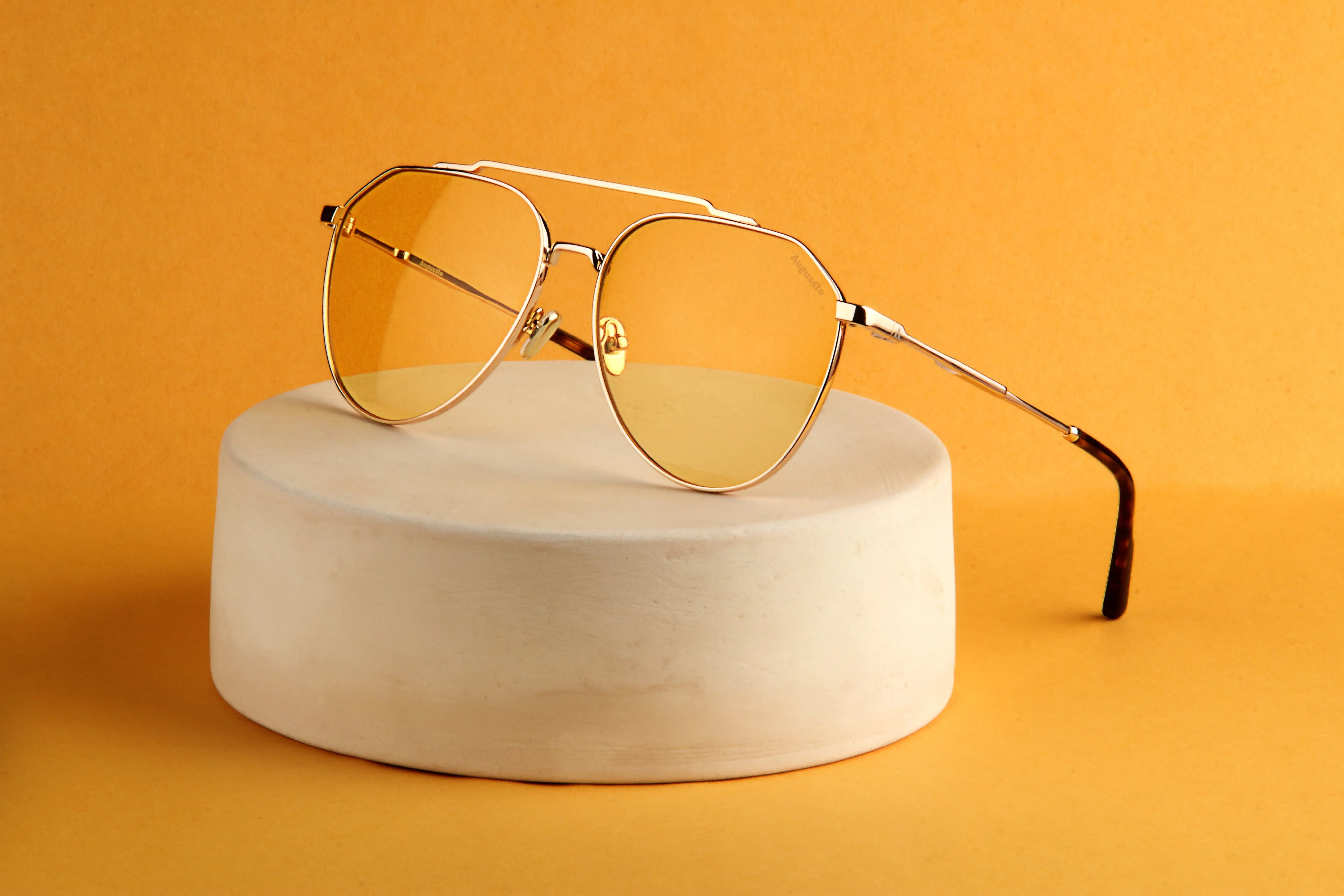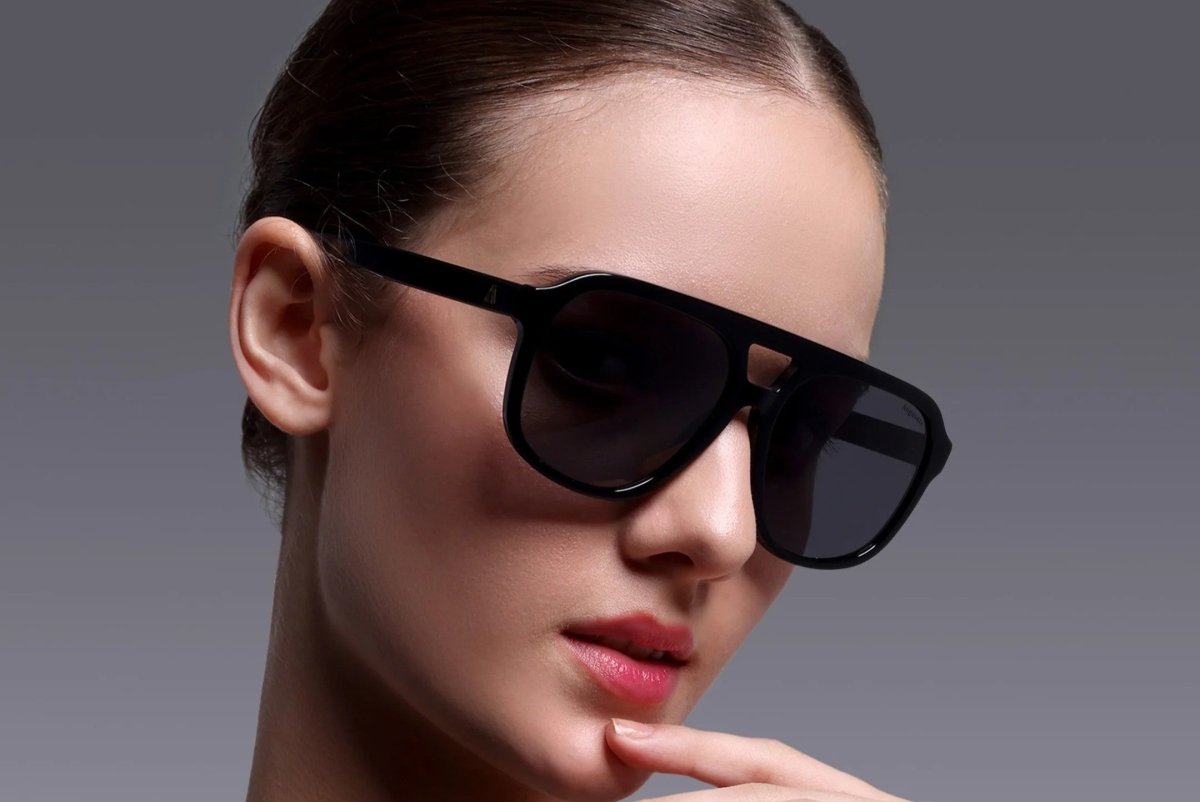Introduction: Why Proper Eyewear Fit Matters
Have you ever had bad luck and bought glasses that looked pretty great on the rack but felt awful once you put them on? Maybe you still got headaches, or you had blurry vision with the correct prescription? Regardless, the point is how your eyewear fits you is just as important as what's in the lenses?
All eyewear is fabricated and fit for your face and eyes, any incorrect fit will cause discomfort, vision complications, and possibly threaten how good you feel about yourself. The perfect fit will be super comfortable, allow you to see perfectly, and look as if it was a part of your appearance.
In this article, we will provide you with the Eyewear Fit Checklist and explore each of these three areas of the fit:
– The bridge - how does the eyewear sit on your nose?
- The temples (arms) - how does the eyewear sit and meet the frame?
- Optical centering - How are the lenses aligned and centered with your eyes?
By understanding these 3 areas, you can recommend eyewear that fits well with comfort, style and function.
The Three Pillars of Proper Eyewear Fit
There are many factors in frame selection, but bridge fit, temple adjustment, and optical centering form the foundation of proper eyewear fitting. Let’s explore each in detail.
1. Bridge Fit: Comfort Starts at the Nose
What Is The Bridge Of Eyewear?
Fact: The bridge is the part of the frame that sits across your nose, connecting the two lenses. It carries most of the weight of your glasses.
A good bridge fit ensures that:
-
Your glasses stay in place without sliding down.
-
There is no excessive pressure causing discomfort or red marks.
-
The lenses are positioned properly in front of your eyes.
Type Of Bridge Design
Keyhole Bridge: Looks like an old-fashioned keyhole; sits higher on the nose and suits narrow or low nasal bridges.
Saddle Bridge: Distributes the frame weight evenly across the nose; common in lightweight glasses.
Adjustable Nose Pads: Found on metal frames; allow fine adjustments for custom fit.
How To Assess Fit Bridge
-
The bridge should rest snugly without pinching.
-
There should be minimal gap between the bridge and the nose.
-
Glasses must stay on when you move your head.
Supporting Evidence: The American Optometric Association states improper bridge fit can result in increased nose pressure and headaches if the lenses do not line up because they are not positioned correctly (in front of your eyes).
Example: If you have a flat nasal bridge, a saddle bridge or adjustable nose pads will most likely work better than a higher placed keyhole bridge.
Common Bridge Fit Problems
Sliding Frames: Often caused by a loose bridge or frames that are too wide.
Pinching/Red Marks: Indicates the bridge is too tight or sitting too low.
Speculation: Emerging technologies like 3D scanning may allow custom-made bridges for unique nose shapes, making fit issues rare.
Temple Fit : Stability Behind The Ears
What Are The Temples Of Eyewear?
Fact: Temples, commonly called arms, are the two sidepieces that extend from the frame to go over your ears. They provide side support and help keep your glasses stable.
Why Proper Temple Fit Matters?
-
Prevents glasses from slipping off or being too loose.
-
Prevent excessive pressure to the back of the ears or side of the head.
-
Keep frames positioned properly so your vision is maintained.
How To Assess Temple Fit?
Length: The temple should reach just past your ear and curve gently around it.
Tension: Should be firm enough to hold the frame, but not tight enough to cause discomfort.
Symmetry: Both temples should be parallel, unlevel temples will cause a tilt.
Evidence: Published research in Optometry and Vision Science indicates that one of the more common forms of eyewear discomfort is through temple misalignment; optimizing temple placement will also help in optimizing a lens with relation to your pupils.
Adjustments And Fixes
Optician’s Help: Most optical stores offer free adjustments for temple arms using heat and bending tools.
DIY Caution: Small adjustments can be done carefully, but improper bending may damage frames.
Example: If your glasses slide down despite proper bridge fit, the temples may need to be tightened slightly behind the ears.
Common Temple Fit Issues
Too Tight: Causes headaches or pressure marks.
Too Loose: Frames constantly slip or feel unstable.
Uneven Temples: One side sits higher; optician adjustment needed.
Optical Centring: Precision For Clear Vision
Fact: Optical centering is simply putting the center of your lenses (the most accurate area of your prescription) in line with the center of your pupils. If these points don't properly align, you will likely experience discomfort and lack of clarity; it could also cause eye strain, headaches, or blurring .
Why Does It Matters?
Even with a proper prescription you can have visual discomfort simply from not being properly centered. Optical centering has two major variables:
-
Pupillary Distance (PD): the distance between your pupils.
-
Lens Height and position: where the optical center is vertically in relation to your eye.
How Opticians Measure Optical Centring?
-
A PD ruler or digital pupillometer is a reliable method of acquiring a PD measurement.
-
Monocular PD (PD for each eye) will improve accuracy.
-
You should also pay attention to the shape of the frame and how it sits on the face.
Supporting evidence: Research has shown that a PD error greater than 2 mm can create a subjective visual comfortable issue for the patient, especially in progressive or high powered lenses.
Example of Poor Centring
If your PD is 62 mm but your glasses are made with a PD of 66 mm, the optical centers are too wide. This can cause eye strain or double vision.
Speculation: The Future of Optical Centering
With virtual try-on and AI-based facial scanning, optical centering is becoming more precise. Some companies are even exploring AR-assisted lens fitting.
The Eyewear Fit Checklist: A Quick Recap
Here’s a practical checklist you can use next time you shop for eyewear:
Bridge Fit
-
Sits comfortably on the nose without sliding.
-
No pinching or excessive gap.
-
Design suits your nasal bridge shape.
Temple Fit
-
Proper length reaching just beyond the ear.
-
Firm but not tight.
-
Parallel and even; no tilting.
Optical Centring
-
PD measured accurately.
-
Lenses aligned with your pupils.
-
The frame sits naturally as measured.
Additional Factors Affecting Eyewear Fit
Though bridge, temples, and optical centering are paramount, other factors influence:
Material: Smooth and lightweight titanium or acetate usually provides more comfort.
Weight Distribution: Weight distribution may also be affected by thick lenses. Proper adjustments are important.
Face Shape & Style: Frame shape determines fit and appearance.
Opinion: Style is subjective, however, functional must always supersede aesthetics when comfort and vision are concerned.
Why Proper Fit is an Investment in Eye Health
There is more at stake when it comes to a fitted pair of glasses than just aesthetics; there is eye health involved. Poorly fitted eyewear can contribute to:
-
Chronic headaches.
-
Visual fatigue.
-
Long-term vision impairment as a result of not having the lens aligned correctly.
Supporting Evidence: Optometrists often report that poor fitting continues to be one of the main reasons their patients need to come back for their eyewear or an eyeglass re-check.
Conclusion: The Right Fit Enhances Comfort and Confidence
-
Bridge fit promotes comfort on the nose and improved stability for glasses.
-
Temple fit provides assurance that the hold is enough to feel comfortable.
-
Optical centering ensures that the lenses are aligned to provide the best view without straining your vision.
If you are buying new glasses, allow yourself to experience the science of fit and comfort, do not limit your choice to style. Seek out a trusted eyewear brand or optician—like Augussto
—to help with the fitting. Their professional service will ensure that your glasses remain stylish, fit correctly, and provide protection for your sight.
The perfect fit for eyewear mixes science with styles. By checking the bridge, the temples, and the optical centering, you will be able to see the world more clearly and comfortably.









